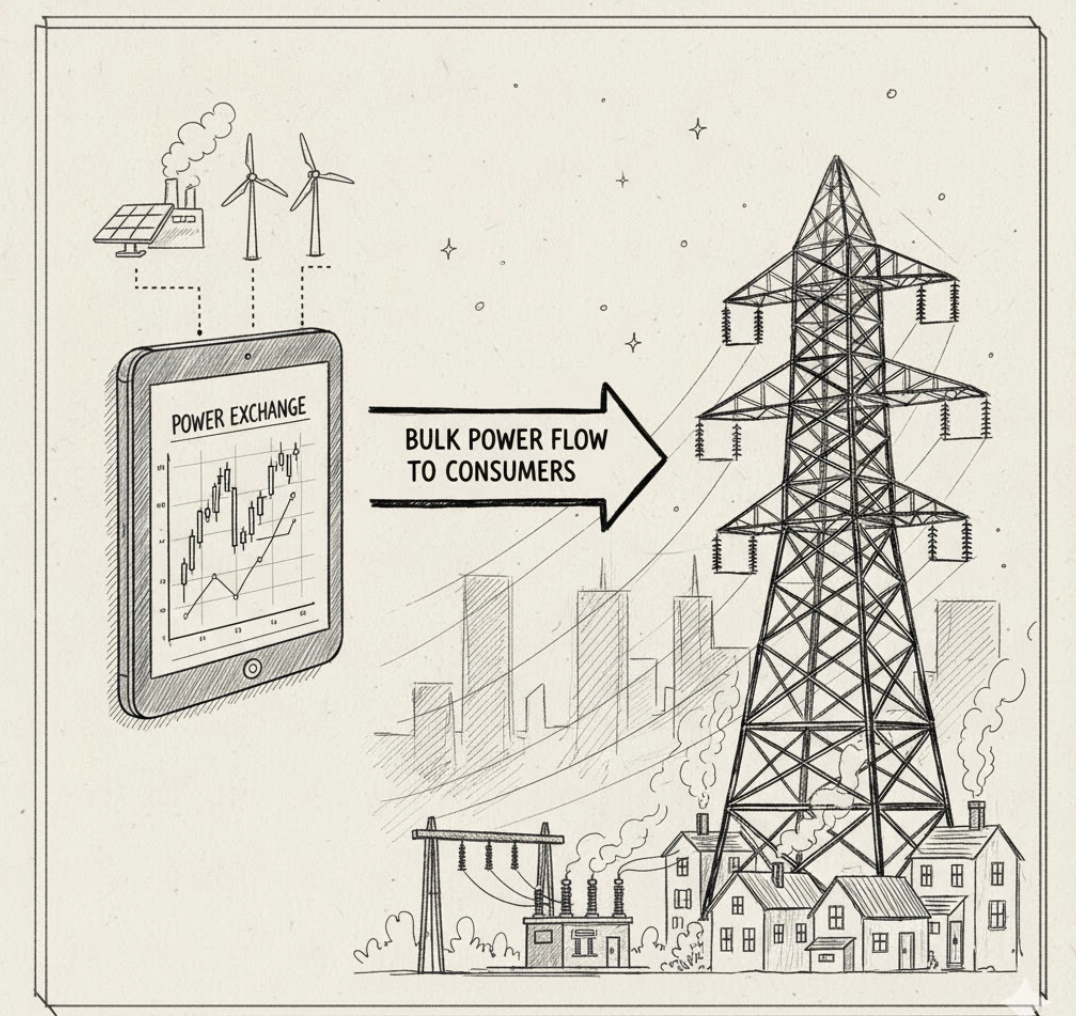
Power Exchange vs. Discom: What’s the difference?
A Power Exchange is an electronic platform where bulk electricity is traded transparently, primarily between generators, Discoms, traders, and large consumers. In contrast, a DISCOM (Distribution Company) is responsible for delivering electricity from the transmission network to end consumers households, businesses, and industries.
What Does a DISCOM Do?
-
DISCOM are regulated entities that buy electricity in bulk mostly via long-term Power Purchase Agreements (PPAs) and distribute it to the final users in a given area or state.
-
They handle billing, maintenance of distribution lines, metering, and customer relations.
-
DISCOM can also participate in power trading for example, buying short-term electricity on power exchanges to fill demand-supply gaps or selling surplus power.
What Is a Power Exchange?
-
A power exchange like IEX, PXIL, or HPX is a neutral marketplace that matches buyers and sellers of electricity on a real-time or day-ahead basis.
-
Generators can offer their surplus electricity and buyers (mainly DISCOM, traders, and open access consumers) can bid for it via a transparent, competitive process.
-
Power exchanges offer flexibility: buyers can purchase electricity for a 15-minute time slot to a few days ahead, adapting quickly to changes in demand.




